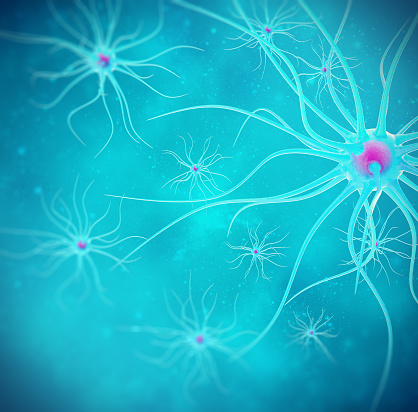
Living significantly longer with an Easter Island extract
November 6th, 2019The Masters of Rapamycin
By Will Block
Peter Attia, M.D., is a Canadian-American physician of Egyptian descent who works exclusively on longevity. He is currently writing a book on rapamycin. A Stanford/ Johns Hopkins/ NIH-trained physician, Dr. Attia is assisted by a team of researchers reading 1,000 papers per month out of the 100,000 new papers the U.S. National Library of Medicine receives each month. Peter feels that very little longevity news gets away from him and he plans to hire more researchers soon.
A physician focusing on the applied science of longevity
Starting out sending a small weekly email to a handful of friends in 2010, he quickly grew into a far larger mailing list including friends of friends, and eventually complete strangers. In 2011, Peter started sharing what he was learning on his old blog at EatingAcademy.com. While still of some concern, the subject of that blog has been principally superseded.
Today, what began as a personal blog about nutrition has grown into a sizeable site (peterattiamd.com): an ever-expanding core of content on exercise, nutrition, metabolic disease, and other topics related to the science of longevity.
His goal with this site is to translate the cutting edge of longevity science, (something roughly 0.01% of people are able to truly fathom) into something that is more genuinely understandable, and something that propels individuals to act, as a consequence of data garnered by his research team and through extensive interviews with leaders in longevity.
Peter’s approach focuses on delaying the onset of chronic disease (aging), while simultaneously improving quality of life (healthspan). To accomplish this, Peter’s practice applies nutritional biochemistry, exercise physiology, sleep physiology, the study of lipids, pharmacology, techniques to increase distress tolerance, and the study of hormones. His favorite subject these days is a drug, which he consumes weekly, specifically rapamycin. Peter’s dosage sweet spot is 2 mg to 5 mg of rapamycin, every 5 to 7 days.[i]
“… across about a billion years-worth of evolutionary animal models, everything from yeast to worms, fruit flies to mammals, rapamycin seems to universally increase the length of life.”
Rapamycin binds to a complex called mTOR (mechanistic target of rapamycin) found in our cells and inhibits its activity. Among the many things that mTOR does (when inhibited), is to regulate autophagy causing cells to eat themselves. In this process, dysfunctional cells (like cancer cells) tend to be “eaten” first. In a sense, turning down the negative of mTOR mimics what happens to the body in a nutrient sparse environment. It is quite like what an individual can achieve by limiting the amount of food one eats, while avoiding malnutrition.
Autophagy Nobel Prize
The Nobel Prize in Physiology or Medicine 2016 was awarded to Yoshinori Ohsumi. The Nobel Laureate discovered and explicated the mechanisms underlying autophagy, a fundamental process for degrading and recycling cellular components. Rapamycin induces autophagy.
The word autophagy originates from the Greek words auto-, meaning “self,” and phagein, meaning “to eat.” Thus, autophagy denotes “self-eating.” This concept emerged during the 1960s, when researchers first observed that the cell could destroy its own contents by enclosing it in membranes, forming sack-like vesicles that were transported to a recycling compartment, called the lysosome, for degradation.
Difficulties in studying the phenomenon meant that little was known until, in a series of brilliant experiments in the early 1990s, Yoshinori Ohsumi used baker’s yeast to identify genes essential for autophagy.[ii] He went on to clarify the underlying mechanisms for autophagy in yeast and showed that similar sophisticated machinery is used in our cells.
Ohsumi’s discoveries led to a new paradigm
His discoveries opened the path to understanding the fundamental importance of autophagy in many physiological processes, such as in the adaptation to starvation or response to infection. Mutations in autophagy genes can cause disease, and the autophagic process is involved in several conditions including cancer and neurological disease. Rapamycin is an autophagy inducer.
Dr. Attia doesn’t foresee endless horizons. As is true for another group of scientists highly interested in rapamycin, for “research” purposes, Attia does not favor “forever,” nor does he believe that life favors forever. He is not an immortalist. Too bad!
The Medical Practice of Dr. Green
In a recent paper (2014), it was reported that rapamycin extended the median lifespan 23% in male mice and 26% in female mice.[iii] Rapamycin, a drug used as an immune-suppressant in the treatment of organ transplant patients, may be the most potent life-extension drug currently available. Adding to that, the practice of rapamycin in anti-aging medicine is just getting started.
Mikhail Blagosklonny, an M.D. doctor and a Ph.D. scientist at Roswell Park Cancer Institute in New York, has been the most notable and vocal advocate of the use of rapamycin to extend human lifespan. While rapamycin has adverse side effects in humans who take it daily for immuno-suppression, recent research has found that pulse dosing—perhaps once a week—may confer most of the anti-aging benefits without any significant adverse side effects.
The Moai of Easter Island (Rapa Nui)
Will rapamycin fight aging in humans and extend lifespan?
Unfortunately, clinical trials of rapamycin for life extension purpose are unlikely to happen any time soon, but some people would like to find out. Alan S. Green, M.D., who practices medicine in New York, is among them. Beginning in early 2016, he began to take rapamycin himself, along with metformin, an angiotensin blocker, and aspirin.
Based upon empirical medicine principles, Dr. Green decided that rapamycin at 6 mg once a week would be an aggressive treatment and 3 mg once every 10 days would be a conservative treatment. His choice was the aggressive treatment. In January of 2016, he began the rapamycin-based Koschei [“Deathless,” A Slavic Legend of Immortality,” from mythic Russia] formula with intent to take it for one year; in what could inoffensively be called a “proof-of-concept” experiment. He didn’t have to wait one year, for by 4 months—the results were “miraculous”—so he kept on going.
Dr. Green lost 20 pounds, his waist-line went from 38 inches to 33. He bought a pair of size 32 jeans and didn’t have to wear joggers any more. Dr. Green could walk 5 miles a day and ride a bike up hills without any hint of angina. Creatinine went from elevated to normal and fasting blood sugar went down. At the time of this interview, it’s now over one year and Green still feels great. He’s also had no mouth sores, the most common clinical side-effect. For the good doctor, rapamycin is the world’s greatest medicine!
Moreover, Dr. Green is the author of another study using both an AGE (advanced glycation end-products) diet and intermittent rapamycin,[i] just as above (pulse dosing), for three years following Blagosklonny’s most recent paper,[ii] and for himself, Green’s most recent paper described above. It has been known since the 1930s that caloric restriction extends lifespan and slows aging.
Rapamycin Offers Caloric Restriction
Rapamycin could be characterized as caloric restriction in a pill. In a mouse study, rapamycin had similar effect in aged mice as 40% caloric restriction in restoring the dysfunction of old hearts to normal function of young hearts.[iii] The effect of caloric restriction is to decrease mTOR indirectly; the effect of rapamycin is to decrease mTOR directly.
On one hand, aging may be defined as an increase in the probability of death. If a drug extends lifespan, that drug is slowing aging. Aging is the main risk factor for age-related diseases such as heart disease, cancer, Alzheimer’s disease, or blindness. Slowing down aging and staying young is the goal of Rapamycin Medicine.
Rapamycin has only one action; it targets or binds to mTOR and thereby lowers mTOR activity. mTOR and rapamycin are related as a key to a lock. As previously stated, mTOR has been conserved through 2 billion years of evolution. mTOR functions as the central hub of the cell signaling system, the command and control center of the cell.
Rapamycin was approved in 1999 as a prescription medicine to be used in high daily dose as an immunosuppressant in transplant medicine. Used in this manner, rapamycin has very limited benefits aside from use in transplants as it has too many side effects to be of general interest. Miraculously, when used as a non-immunosuppressant, low dose, weekly medication, rapamycin is transformed into a silver bullet, with minimal side effects and extraordinary benefits. For rapamycin, less is more.
Rapamycin is to Penicillin as…
Rapamycin, like penicillin, was the product of biologic warfare between bacteria and yeast. Like a mirror image, penicillin—discovered in 1928—was made by yeast to target bacteria, while rapamycin, found in the soil of Easter Island (Rapa Nui, the local name) in 1965, was made by bacteria to target yeast (the other way around). The bacteria of Easter Island targeted mTOR, the command and control center of the yeast cell. However, mTOR, the substance targeted in this never-ending war between yeast and bacteria, is the command and control center of not just yeast. It takes that role for every living thing on planet earth. mTOR is, (in essence) the “secret” of how life is organized within the cell.
Rapamycin has another similarity to the discovery of penicillin. In the cancer sections of his papers, Mikhail Blagosklonny states; “Rapamycin could be used for extension of healthy lifespan and prevention of age-related diseases by slowing down the aging process. This may become one of the major breakthroughs in medicine since the discovery of antibiotics.”
mTOR and Age-Related Disease
mTOR is a complex large protein located in the cytoplasm of the nucleus. It operates in close communication with the nucleus of the cell. It is always there. The nucleus contains the DNA that comprises the blueprints for making each individual protein. mTOR signals the nucleus: make this protein! mTOR senses what is happening within the cell and then signals the nucleus how to respond. The nucleus then responds by providing the blueprints to make the specific different proteins.
The Watershed Year
In the developing and growing animal, mTOR functions to near perfection, mTOR’s primary purpose is growth and development.
mTOR has been conserved for two billion years for good reason. However, in the older animal, mTOR has a dark side. This dark side was first recognized by Mikhail Blagosklonny.
The year 2006 was a watershed year in biology, hosting one of the most important papers since 1859, the year Charles Darwin published, “On the Origin of Species.” The great biologist’s paper is at the foundation of evolutionary biology.
The 2006 paper was “Aging and Immortality: Quasi-Programmed Senescence and its Pharmacologic Inhibition.”[i] In his research, Blagosklonny postulated that aging was a disease process caused by overactive mTOR.
Moreover, overcharged mTOR was also responsible for most age-related disease. Aging was merely the accidental result of another program that was the continuation of the essential growth program.
Aging and age-related disease are two sides of the same coin, the same disease process. Furthermore, mTOR could be controlled with rapamycin. Mankind has in hand the ability to ameliorate aging and age-related disease.
In summary, the problem for the old animal is that mTOR is at too high a level after growth and development have stopped. Elevated activity of mTOR is at the very center of aging and age-related disease. What the old animal needs is a kind of software upgrade (mTOR 2.0) for the older animal. Nature and evolution never provided this fix; however, rapamycin is the pharmacologic fix for the older animal.
Treatment or Prevention? Is Aging a Disease?
For the past 2000 years, aging has been considered a natural process–not a disease. The reasoning was, everybody gets aging and if everybody gets it, then it is natural. This is the accepted view of orthodox medicine and the position officially endorsed by the FDA.
Disease is defined as: “A disorder of structure or function in a human, animal, or plant, especially one that produces specific signs or symptoms or that affects a specific location and is not simply a direct result of physical injury.” Disease causes pathology.
Dr. Green considers aging to be not just a disease, but “the mother of all disease,” a chronic progressive disease with 100% incidence and 100% fatality. As does Mikhail Blagosklonny!
The general rule in medical treatment is that medicines used to treat a disease that somebody has, i.e. cancer, can have side effects; but a medicine used for prevention should have no side effects.
I consider intermittent rapamycin to have few side effects, a safe drug in the general world of dark drugs. Nonetheless, all drugs have some side effects.
If you think that aging is not a disease and rapamycin is only for prevention, then you might say rapamycin should not be used.
On the other hand, if you have felt the sting of aging and believe rapamycin is treating a disease which you very much already have, then you are far more inclined to think the risk of side effects is justified.
Mikhal V. Blogosklonny
Aging can be divided into early aging and late aging
Early aging includes the pathology in the 50-99 age group and the increasing susceptibility to age-related disease. Late aging includes the pathology in the 100-110 age group. Late aging inexorably leads to death. There is no current prevention or treatment for late aging and late aging is outside the scope of Dr. Green’s practice.
The use of the term “aging” in an earlier paper only refers to “Early Aging.” Blagosklonny uses the term, “post aging syndrome” to refer to late aging. While Green believes that “early aging” is multi-factorial, he also believes that increased activity of mTOR is postulated as a very significant cause of early aging and a significant and treatable factor in the cause of the common age-related diseases.
Green’s office treats the disease of increased activity of mTOR. The objective of such treatment is to ameliorate and prevent the vast amount of diseases associated with elevated mTOR. Treatment is directed against the disease of aging, and age-related diseases are connected to aging as smoke is to fire.
Extreme Rapamycin Enthusiast
Blagosklonny first entered the cancer treatment field in the early 2000s, when he realized the same qualities that made rapamycin effective at slowing tumor growth might also help it slow the aging process.
He became so convinced of rapamycin’s potential, and its safety, that he tried it himself. Some people asked him whether it is dangerous to take rapamycin. Blagosklonny says, “It’s more dangerous to not take rapamycin than to overeat, smoke, and drive without a [safety] belt, taken together.”
Many colleagues have regarded his advocacy as a bit over-the-top. When Blagosklonny submitted papers to major journals making these arguments, they were brutally rejected. “Sometimes, the reviewers would call me names,” he says.
That started to change in 2009, when a large National Institutes of Health-funded study established that rapamycin and its derivatives helped mice live longer. The NIH scientists started mice on the drug at 20 months, or late-middle age in mouse terms, (mice typically live two to three years). Male mice on rapamycin lived 9 percent longer. The females’ life span was extended by 14 percent. This is roughly the equivalent of giving 60-year-old women a pill that would enable them to see their 95th birthday.
Is aging a disease?
It really doesn’t matter, because aging is already treated using a combination of several clinically-available drugs, including rapamycin. Whether aging is a disease depends on arbitrary definitions of both disease and aging. If you consider treatment, aging is a deadly pre-disease, despite being a normal continuation of normal organismal growth. It can be successfully treated, thereby delaying classic age-related diseases such as cancer, cardiovascular and metabolic diseases, and neurodegeneration.
While Mikhail Blagosklonny has published on a broad range of topics on cancer, his interest lately seems to focus on the link between cancer and aging and finding links and similarities in their pathways. Having dedicated many years to studying the molecular and cellular biology of oncogenes, genes capable of transforming a cell into a tumor cell, and tumor suppressors, Blagosklonny has helped reveal that rapamycin, a cancer drug, can help extend the longevity of life.
[i] Blagosklonny MV. Aging and immortality: quasi-programmed senescence and its pharmacologic inhibition. Cell Cycle. 2006 Sep;5(18):2087-102. Epub 2006 Sep 15.
[i] Green AS. mTOR, glycotoxins and the parallel universe. Aging (Albany NY). 2018 Dec; 10(12): 3654–6.
[ii] Blagosklonny MV. Disease or not, aging is easily treatable. Aging (Albany NY). 2018; 10:3067–78. 10.18632/aging.101647
[iii] Singh SR, Zech ATL, Geertz B, Reischmann-Düsener S, Osinska H, Prondzynski M, Krämer E, Meng Q, Redwood C, van der Velden, J, Robbins J, Schlossarek S, Carrier L. Activation of autophagy ameliorates cardiomyopathy in Mybpc3-targeted knock-in mice. Circ Heart Fail. 2017 Oct; 10(10): e004140.
References:
[i] Wang B. Peter Attia has a clinician approach to longevity and discusses Rapamycin dosage. The Big Future. 2018, May, https://www.nextbigfuture.com/2018/05/peter-attia-has-a-clinician-approach-to-longevity-and-discusses-rapamycin-dosage.html
[ii] Takeshige K, Baba M, Tsuboi S, Noda T, Ohsumi Y. Autophagy in yeast demonstrated with proteinase-deficient mutants and conditions for its induction. J Cell Biol. 1992 Oct;119(2):301-11.
[iii] Miller RA, Harrison DE, Astle CM, Fernandez E, Flurkey K, Han M, Javors MA, Li X, Nadon NL, Nelson JF, Pletcher S, Salmon AB, Sharp ZD, Van Roekel S, Winkleman L, Strong R. Rapamycin-mediated lifespan increase in mice is dose and sex dependent and metabolically distinct from dietary restriction. Aging Cell. 2014 Jun;13(3):468-77. doi: 10.1111/acel.12194. Epub 2014 Feb 9.








